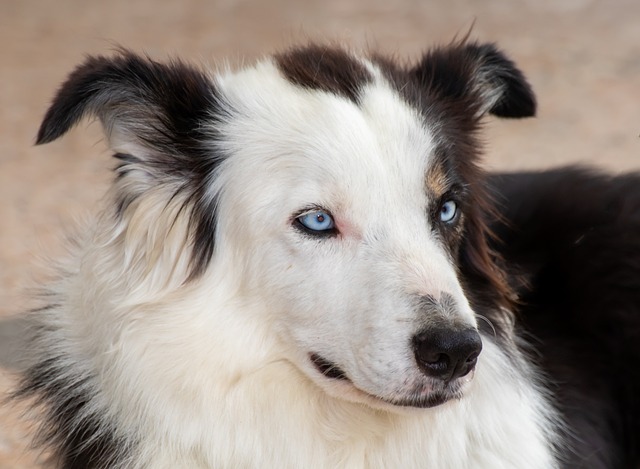
Is standing for a long time harmful to a dog's body
When we see dogs performing on their hind legs in circuses or street entertainers training dogs to stand for prolonged periods to beg,
When we look into the eyes of dogs, the originally bright and clear eyes suddenly show distressing red bloodshot, and even become swollen and secrete more. Dogs scratch their eyes with their claws from time to time, and their eyes are full of discomfort and helplessness. At that moment, the owner's heart seemed to be grabbed, and he just wanted to find a way to dispel the discomfort in the eyes of the fur children and relight the light in their eyes. You know, dogs can't speak, and their health and emotions depend on our careful observation and protection. Relieving the symptoms of red eyes in dogs is not only a nursing action that races against time, but also a manifestation of our deep love for them.
There are many complex reasons behind the red eyes of dogs. From a professional medical point of view, infection is one of the common factors that cause red eyes. Bacteria, viruses or fungi take advantage of the opportunity to breed and multiply in the dog's eyes, causing inflammation such as conjunctivitis and keratitis, making the originally clear eyes become red. Just like our eyes feel uncomfortable when we have a cold, dogs are also prone to infection when their resistance is reduced. Allergies are also a cause that cannot be ignored. Pollen, dust mites, certain foods, and even the newly replaced doghouse materials may become allergens. When a dog comes into contact with these "enemies", the immune system will sound the alarm, release substances such as histamine, stimulate the dilation of blood vessels in the eyes, and then appear symptoms such as redness, swelling, and itching. In addition, eye injuries, entropion, glaucoma, and other problems can also put the dog's eyes in a "red crisis."
When the owner finds that the dog's eyes are red, the first reaction is often anxiety, but the more at this time, the more you should stay calm and observe carefully like a detective. Pay attention to the specific manifestations of the dog's red eyes: Is only one eye red, or both eyes have symptoms? Is the eye swollen and tearful, and is the secretion clear, purulent, or bloody? Does the dog scratch or rub his face frequently, or squint or be afraid of light? At the same time, recall the recent changes in the dog's life, whether it has been exposed to new environments and foods, or has there been collisions, fights, etc.
 While waiting for medical treatment or the symptoms are mild, we can take some home measures to gently relieve the dog's eye discomfort. Cleaning is the first step, just like caring for a precious work of art. Prepare clean warm water and sterile cotton balls, hold the dog gently in your arms, soothe it with a gentle tone, and let it relax. Then, gently wipe the secretions around the eyes from the beginning to the end of the eye. The action must be gentle to avoid irritating the already sensitive eyes. If the secretions are dry, do not wipe them forcibly, but apply them with a cotton ball dipped in warm water for a while, wait for it to soften, and then clean it carefully. During the cleaning process, if the dog shows resistance, don't worry, give it more patience, complete it several times, or reward it with snacks appropriately, so that it will slowly accept it.
While waiting for medical treatment or the symptoms are mild, we can take some home measures to gently relieve the dog's eye discomfort. Cleaning is the first step, just like caring for a precious work of art. Prepare clean warm water and sterile cotton balls, hold the dog gently in your arms, soothe it with a gentle tone, and let it relax. Then, gently wipe the secretions around the eyes from the beginning to the end of the eye. The action must be gentle to avoid irritating the already sensitive eyes. If the secretions are dry, do not wipe them forcibly, but apply them with a cotton ball dipped in warm water for a while, wait for it to soften, and then clean it carefully. During the cleaning process, if the dog shows resistance, don't worry, give it more patience, complete it several times, or reward it with snacks appropriately, so that it will slowly accept it.
Rinsing the eyes with saline is also an effective relief method. The osmotic pressure of saline is similar to that of the dog's intraocular environment, and it will not cause additional irritation to the eyes. After stabilizing the dog's position, use a medical syringe to draw an appropriate amount of saline, slowly inject it from the outer corner of the dog's eye, let the saline flow naturally along the eye, and wash out foreign matter, secretions and some allergens in the eye. When flushing, pay attention to observe the dog's reaction. If it shows obvious pain or discomfort, stop immediately. Each flushing can be repeated 3-5 times, 2-3 times a day, but remember that this is only an emergency treatment method and cannot replace professional diagnosis and treatment.
If it is initially determined that the dog's red eyes are caused by allergies, it is crucial to create a low-allergen environment for it. Carefully check the places where allergens may exist in the home, clean thoroughly regularly, and use a vacuum cleaner to clean the gaps in the carpet and sofa to reduce the breeding of dust mites and mold; replace the dog's daily necessities and choose mild and non-irritating materials; in the season of pollen transmission, try to reduce the dog's going out, or wear protective glasses for it. At the same time, you should also pay attention to the diet, avoid feeding foods that may cause allergies, and consult a veterinarian if necessary to adjust the dog's diet.
However, if the dog's red eye symptoms continue to not ease, or there are severe conditions such as severe eye pain, decreased vision, corneal ulcers, etc.you must take it to the pet hospital immediately. The veterinarian will accurately determine the cause of the disease through professional examinations, such as ocular cytology examinations and intraocular pressure measurements, and formulate targeted treatment plans. Eye drops or ointments may be prescribed, such as antibiotic eye drops for infection, antihistamine eye drops for allergy relief, and artificial tears for dry eyes. The owner should strictly follow the doctor's instructions and give the dog medication on time and in the right amount. When giving the dog eye drops, first gently open its lower eyelid, drop the drops into the conjunctival sac, and then gently massage the area around the eye to help the drug absorb better.
During the recovery of the dog's eyes, companionship and care are never absent. Spend more time with it, comfort it with gentle touches and warm words, and reduce its anxiety caused by eye discomfort. Take the dog to the hospital for regular checkups and adjust the treatment plan according to the recovery situation. Every time we see the dog feel uncomfortable because of eye discomfort, we wish we could bear it for it; and when we see the red in its eyes gradually fade away, become bright and lively again, and run towards us happily with its tail wagging, all the hard work and worries turn into full of comfort.

When we see dogs performing on their hind legs in circuses or street entertainers training dogs to stand for prolonged periods to beg,

When we prepare to greet the dog's warm greeting as usual, we find that the once bright and clear eyes have become red and swollen, and the dog keeps scratching with its claws, with a look of discomfort and helplessness in its eyes.

When you notice your beloved dog constantly scratching, biting itself, or see its once-smooth coat becoming red, swollen,

When you see your beloved dog constantly scratching or notice suspicious black specks in its smooth fur, it’s natural to feel concerned. Parasites are a common health issue for dogs,

When we look into the eyes of dogs, the originally bright and clear eyes suddenly show distressing red bloodshot, and even become swollen and secrete more.

At the moment when the door closes, there comes the heart wrenching barking of dogs inside the house, or when they come home and see a chewed sofa and scattered slippers,